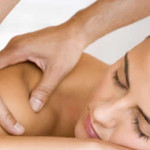How Does Massage Help Frozen Shoulder?
Although adhesive capsulitis (frozen shoulder) is painful and can take so long to heal, but it is manageable and even curable! The treatment options include non-surgical and surgical medications. Some alternative treatments are available, too. One of these is massage therapy – how does it help improve this shoulder condition?
Massage itself is a common term to describe the ways of rubbing, pressing, and manipulating some parts of the body (especially such as skin, muscles, ligaments, and tendons). It may range from deep pressure to light stroking.
Typically, therapists use their fingers and hands for massage. But sometimes their elbows, forearms, or even feet are involved, too.
 There are numerous ways to do this therapy. Even it has at least 80 different types of technique. While some are gentle to help provide relaxation, others can be so intense and active.
There are numerous ways to do this therapy. Even it has at least 80 different types of technique. While some are gentle to help provide relaxation, others can be so intense and active.
The following are some common types of massage:
- Trigger point technique. It targets areas of tight muscles. Many times, the muscles can tighten after overuse or injuries.
- Swedish technique, a gentle type of massage. It can help relax the muscles and energize you by using long strokes, vibration, tapping, and deep circular movements.
- Sport-technical massage! As the name implies, it is commonly used in athletes or in sport activities in order to reduce the risk of injuries. It is almost similar to what happen in Swedish technique.
- Deep massage! It is commonly used to help treat muscle damage from injuries. Each step in this technique is slower. And it uses more-forceful strokes to treat the deeper layers of connective tissue and muscles.
What you need to prepare before massage?
In general, there is no special preparation for this therapy. But typically your therapy will ask some of the following questions before taking the therapy:
- Are there any symptoms you have?
- Some issues about your own medical history. For instance, if you are taking other medications or if you just have taken a surgery, it’s much better to allow your therapist know these.
- About your goal of taking massage (you are hoping to get out of the therapy)!
After making assessment on your profile, your professional therapist decides the appropriate massage technique that you need. And he /she should explain this before you start the therapy.
Most people can take massage. However, there are some conditions of when massage is not recommended.
This therapy may not be your best choice if you have one or some of the following conditions:
- If you are taking blood-thinning medication or if you have bleeding disorders.
- If you have open, burns, or healing wounds.
- Bone fractures
- Osteoporosis (especially in severe case).
- Thrombocytopenia (a medical problem of too low blood platelet count).
- Deep vein thrombosis.
To keep safe, it’s better to discuss first with your doctor (particularly true if now you are being pregnant or have other medical conditions) before you take this therapy!
If massage does help, what is it for?
The use of massage in treating numerous of different health conditions is commonly considered as a part of complementary treatment. So many times, it is used for alternative option along with the main treatment.
Scientifically, massage can help reduce stress, ease pain, and improve muscle tension. Though more studies are required, it may also help treat the following conditions:
- Sport injuries and pain.
- Some digestive problems.
- Anxiety.
- Fibromyalgia pain.
- Some sleep problems, especially such as insomnia due to stress.
- Headaches.
- Nerve pain in paresthesias.
- Soft tissue injuries and strains.
- Myofascial pain syndrome.
Massage is increasingly being offered along with conventional standard treatment for a wide range of health conditions. Even many doctors say that now they often refer their patient to massage therapists.
How about in frozen shoulder? Does this therapy really work?
Massage can be one of alternative treatments for people with adhesive capsulitis (depending on the severity of the problem). The effect of the therapy can vary from patient to patient.



